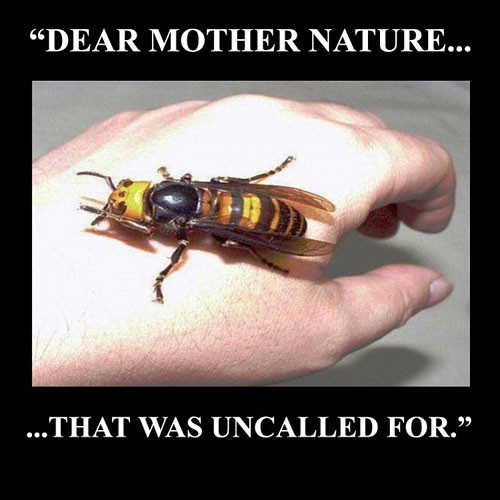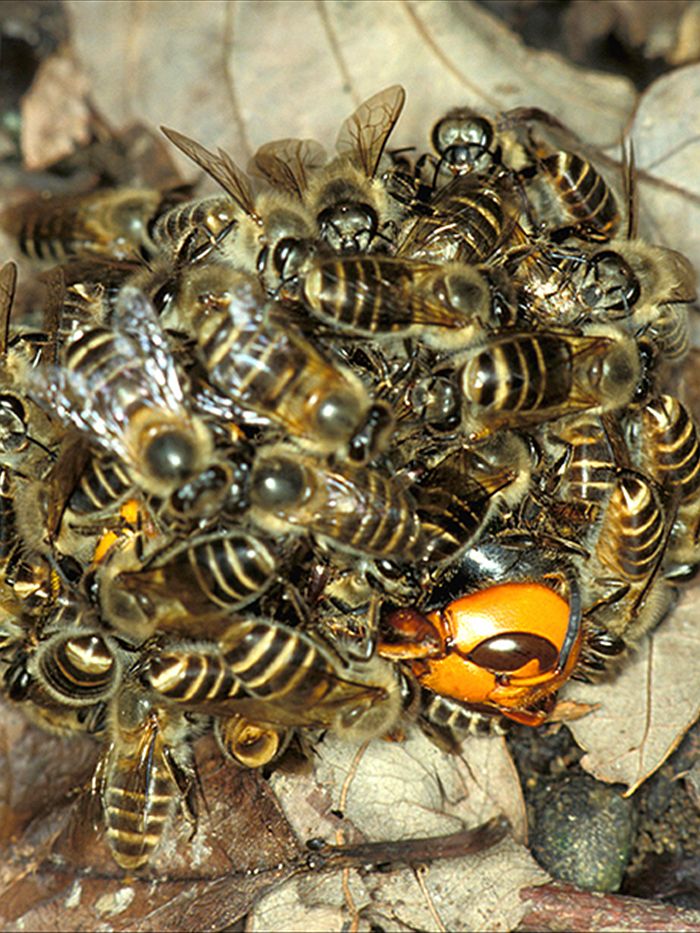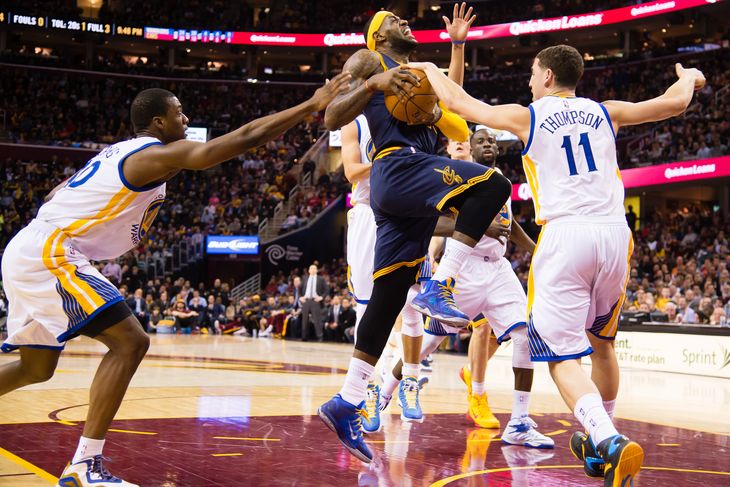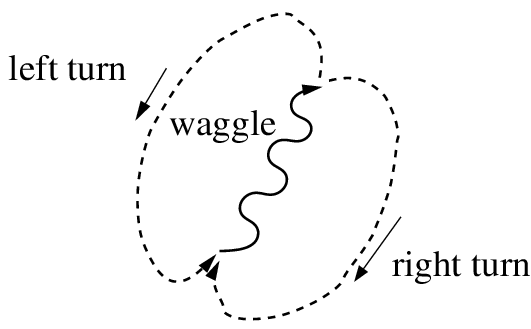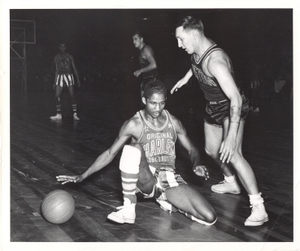
A charming time-capsule starring another charismatic but forgotten actor, Dane Clark (not the execrable Dane Cook), alongside a young Sidney Poitier, “Go Man Go!” features a bebop score by Slim Galliard, who was a favorite of Jack Kerouac. I wonder what the connection with “On the Road” is — I remember the phrase “Go Man Go” as an exhortation Sal Paradise shouted out to improvising jazz musicians.
Slim Galliard makes an appearance, playing a piano with his fingers upside down for a small gathering of Globetrotters. I love Kerouac’s description of a Galliard concert:
‘… we went to see Slim Gaillard in a little Frisco nightclub. Slim Gaillard is a tall, thin Negro with big sad eyes who’s always saying ‘Right-orooni’ and ‘How ’bout a little bourbon-arooni.’ In Frisco great eager crowds of young semi-intellectuals sat at his feet and listened to him on the piano, guitar and bongo drums.”
“…Then he slowly gets up and takes the mike and says, very slowly, ‘Great-orooni … fine-ovauti … hello-orooni … bourbon-orooni … all-orooni … how are the boys in the front row making out with their girls-orooni … orooni … vauti … oroonirooni …” He keeps this up for fifteen minutes, his voice getting softer and softer till you can’t hear. His great sad eyes scan the audience.”
What kills me is “ovauti“, it makes sense next to “o-rooni” but it’s so weird, where is it coming from? It’s perfect though.
That’s the 1950’s part of this movie, the 1940’s part consists of stereotypical interactions between Clark as Abe Saperstein, Bill Stern (as himself) a hard-bitten but honest sportswriter, and the evil Potter-like sports magnate Mr. Willoughby. The Bowery-Boys-style slang they use — “Hey ya mug! Ya gonna be a chump all your life? Of course you’re invited!” — is the direct precursor of today’s crushingly unimaginative board-room Ebonics appropriation: “Quarterly earnings doubled? Girl, go on with your bad self!”. It was probably just as hard to listen to back then.
The 1960’s part of the movie is best shown in the final scene, Abe Saperstein, arm-in-arm with the Globetrotters, walking triumphantly towards the camera, in a hopeful message of racial healing. Shades of Blackboard Jungle. I can’t recall another movie from the 1950’s that was this hopeful and unabashed about race. Today’s derivative ironic culture cannibalizes sentiment like this.
“Go Man Go” also has something to say about acting. In an early scene real-life Globetrotter “Sweetwater Clifton” speaks some lines about how he likes soda pop (the origin of his nickname). He delivers them woodenly, although with charm. This is the low end of the acting scale.
Raising the bar, Dane Clark as Abe Saperstein, shows real conviction, but he’s always hitting something when he acts. “I’m going to get us into big arenas if it’s the last thing I do!’ (SMACK). It’s as if the director fired him up before every scene (“Now this time really mean it!”) without thinking what the cumulative effect would be. Clark’s “average Joe” always seems to be in a harangue.
The best actor in the movie is Sidney Poitier, in a relatively minor role, who pops up from time-to-time to speak a few impassioned lines. He does so with quiet conviction, and having seen the other actors telegraph and flail, one gets a sense of the star quality of Sidney Poitier.
A couple of minor points about this movie: it is exemplary in showing what I like to call “old-time small basketball court syndrome”, action shot in a remarkably cramped gym. Another film that features this is “Angels with Dirty Faces” where the players are dodging trapezes and other non-basketball equipment as they play on a tiny court.
“Go Man Go” made me think of why, although everyone knows Jackie Robinson broke the color barrier in baseball, no one knows who did it in the NBA. It turns out that Charles Cooper was the first drafted, Nat Clifton was the first signed, and Earl Lloyd the first to play in a game, all in 1950. Even though it’s complicated, I would think this deserves a little more recognition. Is it because basketball is not “America’s Game”?
